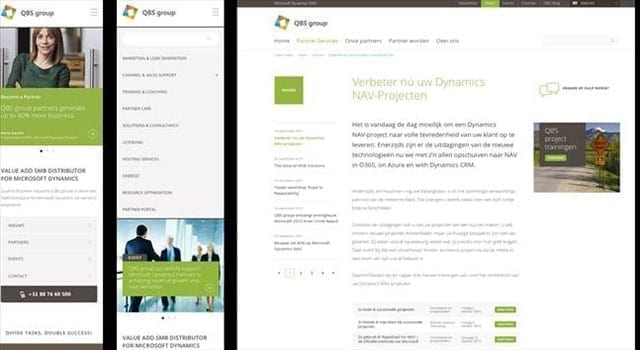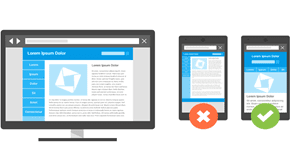Mobile friendly website for QBS group
Our website is now easily accessible for users of mobile telephones.
In November 2015 QBS group moved their website to an ‘adaptive’ design. This means that the website is easily accessible by using a mobile telephone. On the advice of Sander van Leeuwen, online marketer with QBS group, it was a necessary step. Sander: “Over the last two years, we have seen a considerable increase in the number of visitors to our website through mobile telephones. In order to provide our website visitors with a good user experience, we decided to optimise our website for mobile usage.”
An efficient approach
The project started in the summer of 2015 and was approached efficiently. Sander: “The complete website of QBS group consists of over 1200 pages in 10 different languages. So it would be a lot of work to build a complete new website, which wasn’t necessary as all we wanted was a website that was easily accessible for visitors with mobile phones. So we decided to ‘reuse’ the old website as much as possible. As far as content is concerned, the website stayed pretty much the same. The only thing that was ‘freshened up’ was the website’s look and feel.”

An adaptive website
The website of QBS group is now an ‘adaptive’ website which is more than just a ‘responsive’ website. Sander: “A ‘responsive’ website means that the content of the website stays the same on every device. An ‘adaptive’ website, however, shows different content on different devices. For example certain images are not shown on mobile devices. Also tables that are not suitable for mobile devices are not shown.”
It has only just begun
QBS group’s adaptive website went live successfully, but that doesn’t mean the work is over. Sander: “It has only just begun. Releasing a new website means the start of a new phase. We are now going to see how the mobile version of our website is being used and how we can improve this. For example, if we see that more people register for events on the mobile version of our website than on the desktop version, we can choose to move the link for registering higher up the page on the mobile version. And in that way increase registrations.”
Marketing partners
The new website was made possible by QBS marketing partners Spankracht and Maxdoro. Sander: “Spankracht took care of the new ‘look and feel’ and Maxdoro was responsible for coding. I’d like to say thanks to both partners for their hard work. They’ve done a great job.”
See our mobile version
Interested in seeing how the mobile version of our website looks? Take a peek on your mobile phone or just make your browser window smaller and experience the difference.
Would you like your website to be adaptive too?
Do you need your website to responsive or adaptive? Not sure whether it’s necessary for mobile access to your website? Need help to review the possibilities? Then please contact us for our advice.

















